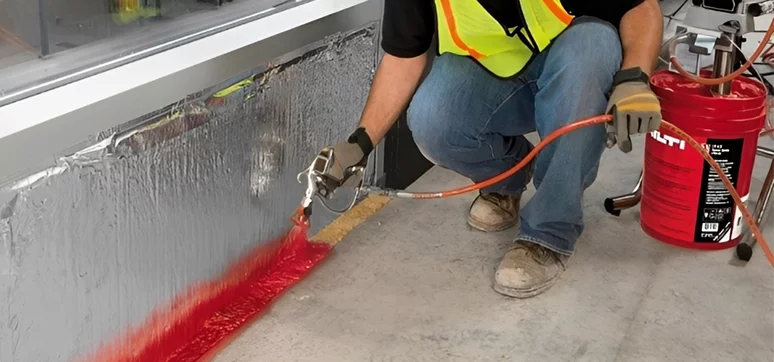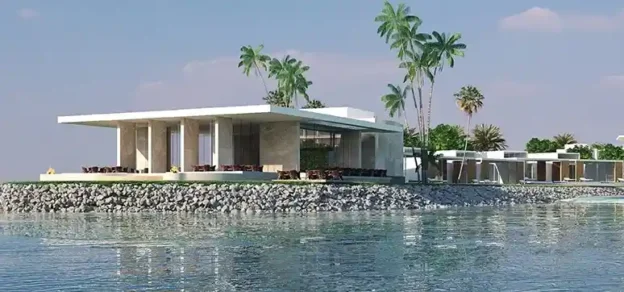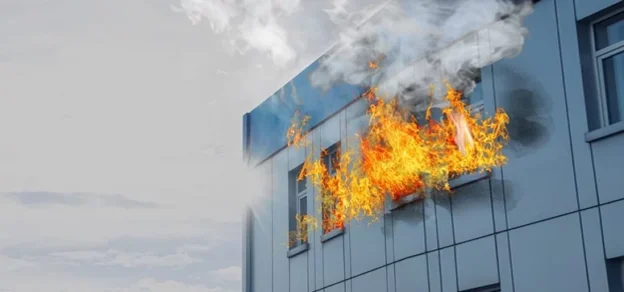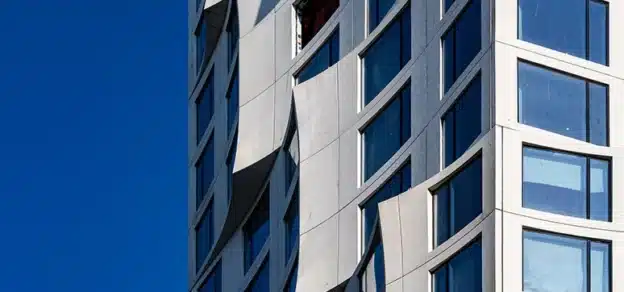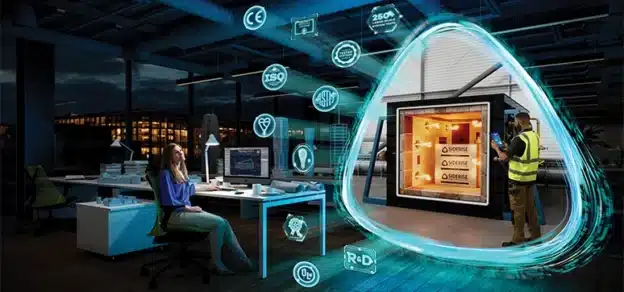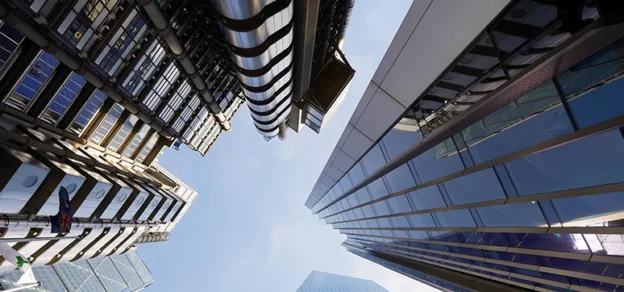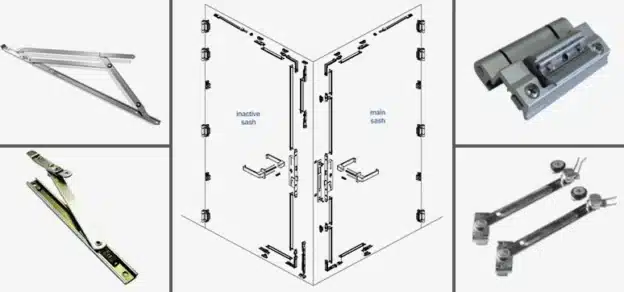The approach shall be to study the ARCHITECTURAL intent with respect to the building envelope. Emphasis needs to be made with respect to the cladding materials used in the interior and exterior of the building. The design team needs to ascertain the active and passive fire safety measures in the buildings after scrutiny of the future power supply requirement and the guideline for the materials used in the building. We need to understand the building codes which have clearly defined the materials and the fire safety provisions to be provided in the building. The real challenge is to ensure the systems are maintained and the people staying are well educated with the nuances of fire hazards in a building. We would emphasize the use of non-combustible materials for the exterior cladding and interior finishes.
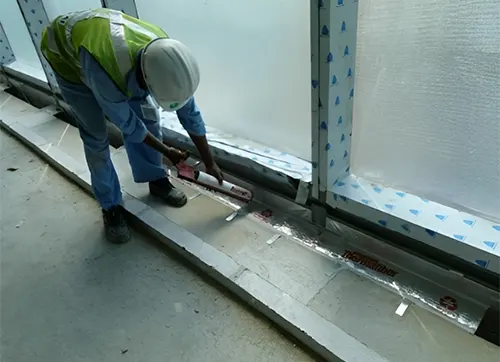
Provide passive fire strategies like a smoke seal and firestop installed by an accredited company including cavity barriers for the wall cladding in case there are punched windows incorporated in the design. Check the orientation of the building and the surrounding access prior to providing an operable window for evacuation as per the building code. Communicate with the CFO with thoughts regarding the practical approaches such as if the building is a high-rise (above 100m) and discuss a strategy instead of just following the codes. We need to understand that “Life is precious till the time we are fit and fine”.
ACTIVE AND PASSIVE MEASURES
Active measures include providing a sprinkler system, actuators, and drenches to deactivate the fire at the Source and reduce the devastating effect of the fire. Passive fire strategy is limited to the following.
- Smoke seal and fire stop at all floors abutting the curtain wall which shall be a 2-hour fire-rated assembly similar to the concrete slab.
- Smoke vents and access panels are to be either side-hung windows with handle access on the inside and outside with an option of breakable glass.
- Actuators for automatic smoke vents or side-hung windows for ventilation and used as smoke vents. The actuators shall be connected to the smoke alarm system.
- A cavity barrier is to be provided at locations where punched openings are provided in the wall cladding system.
- Evaluation strategy varies based on the CFO circular in conjunction with the NBC 2016.
STANDARD FIRE TESTS

Fire tests in India have been limited to evaluating the fire propagation properties of exterior wall assembly systems containing combustible components. By conducting this test, it is possible to check the performance of exterior wall cladding made up of FR-grade Aluminium Composite Panel (ACP)/High-Pressure Laminates (HPL) or any such cladding system.
The NFPA 285 standard specifies the measurement of the temperature at a minimum of 54 locations on the mock-up sample and the maximum temperature each of these locations can reach during the test which runs for 30 minutes. The number of thermocouples to be used for measuring the temperatures at specified locations on the sample increases with the increase in the number of layers of barriers added to the cladding system.
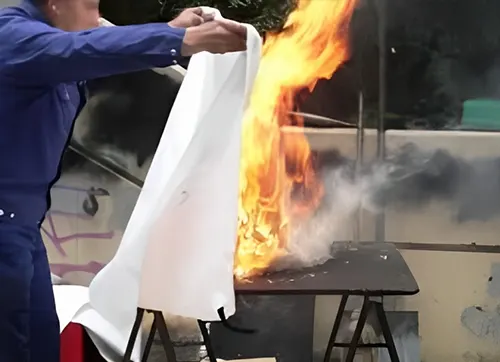
In general, projects do not specify any fire tests with respect to the design. The material and system companies independently test their systems in an accredited lab and submit the test reports to enable the consultant to approve a product or system. The chemical composition of a material dictates the amount of latent energy of the material. This can be quantified using parameters like Calorific Value and Heat Release Ratio using test methods like BS EN ISO 1716 (gross heat of combustion/ calorific value).
ENSURING PRODUCTS USED ON THE FAÇADES/FENESTRATIONS ARE TESTED FOR RESISTANCE TO FIRE
The products generally specified in the tender specifications and design are tested and have a fire rating with respect to the emission of toxic smoke and droplets when burned. The materials which do not meet the criteria are generally not listed in the make list.
Façade and fenestration are generally limited to passive fire safety measures and focused on compartmentalization and correct evacuation strategies in the event of a fire. The fire stop and smoke seal assembly are thoroughly scrutinized from the design stage to the implementation stage and a tested system is generally recommended. The recommended agency is responsible to provide the test reports of the assembly including the materials and performance parameters exactly to the test report submitted. During the execution stage, the fire stop and smoke seal assembly is checked and certified prior to the handover.
We have observed that such scrutiny is not followed in all the projects and is generally neglected. In the case of actuators, the assembly is tested during the performance test with respect to air and water infiltration. In addition, the installed actuators are tested periodically by conducting on-site mock drills to ensure they do not become redundant in the event of an actual fire.
TRENDS, TECHNOLOGIES & MATERIALS FOR FIRE-SAFE FAÇADE

MAGE CREDIT – SUPERTHERM
In the past decade, there is a proper emphasis on life safety and occupant comfort. The technologies have been advancing every hour and new materials could ensure fire hazards are avoided. As oxygen is the main reason for the fire to propagate in a particular room due to the materials surrounding it. It’s on us to ensure we have a better understanding of the safety of people and not use combustible material in our daily use products at home or office. When we talk about the air we breathe we often and falsely talk about oxygen. The air we breathe consists of 78,08 Vol.% of nitrogen and only 20,95 Vol.% of oxygen (0,93 Vol.% Argon and 0,04 Vol.% CO2 ).
This ratio between nitrogen and oxygen is the same all over the world, high up in the mountains or low down at the sea. There are many technologies available like the N2 Oxygen reduction principle which prevents fires before they start. Often the damage caused by the extinguishing media is worse than the damage caused by the fire itself. Extensively used in warehouses, museums, and Server rooms where the data or document is of high value and irreplaceable. In addition to the N2 Oxygen reduction principle, there are certain paints currently available in the market that do not allow the fire to reach the base material, but we find that they are hardly used in the available materials in the market.
Super Therm® is a water-based coating (like paint), developed in conjunction with ceramic engineers from Marshall Space Center (NASA). Heavily tested, the product contains proprietary ceramics, resins, and urethane that counteract the four methods of heat transfer: radiation; conduction; convection; and infrared. This material works on the emissivity principle and does not allow heat to penetrate through the coating. This could be used for coating pre-engineered buildings and other materials such as fire blankets and fire uniforms.
